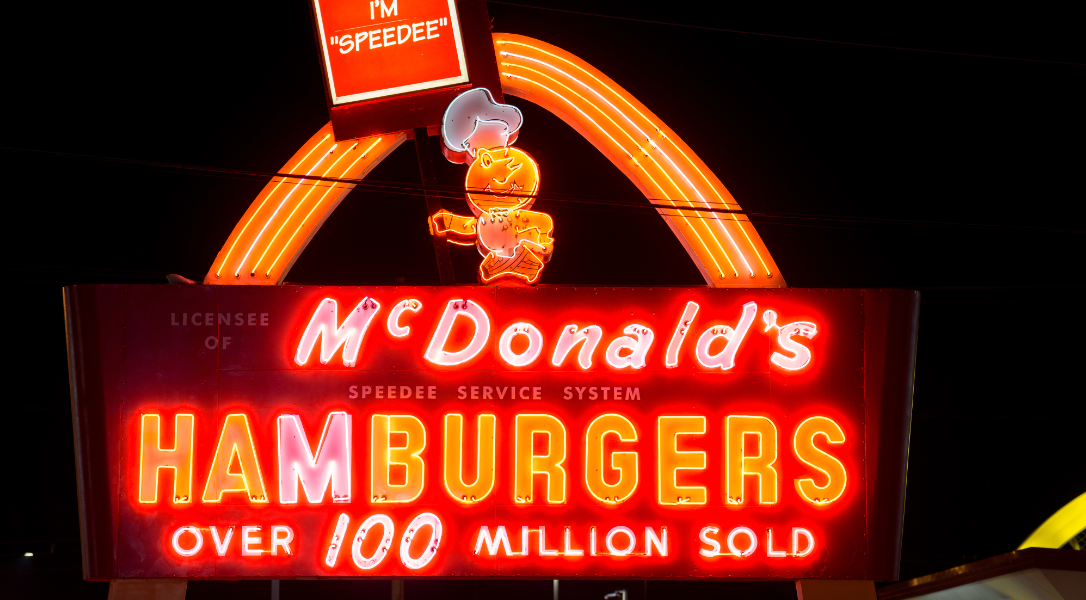McDonald’s is one the most iconic corporate brands in American history.
One of the biggest mysteries about their food just got solved.
And a McDonald’s insider revealed a shocking secret about their hamburgers.
The truth behind McDonald’s immortal burger
Former McDonald’s corporate chef Mike Haracz uses his TikTok account to spill the beans behind the secrets that McDonald’s doesn’t want you to know.
Haracz’s latest subject was McDonald’s so-called “Immortal Burgers” that won’t go bad or mold after decades.
In his video, Haracz explains why this isn’t true.
“When anyone talks about McDonald’s burgers never going bad that is false,” Haracz began.
Haracz explained that McDonald’s burgers not going bad is the result of “dehydration” and the way the franchise cooks the burgers.
“When everyone talks about them pulling out food from behind a seat that’s been there for a year or whatever, it’s a combination of dehydration and the fact McDonald’s cooks their burgers and its meats well done so there’s no raw protein,” Haracz added.
Haracz told viewers that McDonald’s douses the burgers in salt after they cook them which sucks up any water.
“There’s a lot less moist and fat in there. The fact they salt and season after it’s cooked – so that salt is dropping the water activity,” Haracz continued.
“Salt absorbs any free moisture and that free moisture is what microbes and things use to grow,” Haracz stated.
Anyone who thinks a McDonald’s burger from decades ago is the same as the day they bought it is fooling themselves, as it’s the lack of water that preserves the burger.
Haracz said, “The burgers you are seeing are likely dried out and dehydrated, and by no means ‘the same as the day they were purchased.’”
The former corporate chef said in “an enclosed environment to keep them moist,” a Big Mac “will mold after a week or two, just like every other bun.”
Haracz said anyone who doubted him can run a simple test and they will quickly see he’s telling the truth.
All anyone has to do is put a McDonald’s burger in a moist environment, like a Ziploc bag, and watch what happens.
“You are going to see it go bad very, very quick,” Haracz concluded.
Where the story of the Immortal Burger comes from
Australians Casey Dean and Eduards Nits became social media famous when they revealed they still had a preserved McDonald’s burger from nearly 30 years ago.
This began the myth of the so-called “Immortal Burgers.”
“Being teenagers we ordered a truckload of food, and it was just way too much,” Dean stated. “It started a chain of events where we were joking ‘imagine if we kept this forever.’”
The two then left the burger in its original cardboard container, itself inside a timber box – two environments that allowed the burger to dehydrate.
Nearly 30 years later and the burger remained intact, but it was so unappetizing even the rats wouldn’t eat it.
“The rats had actually eaten through the plastic bag, heaps of clothes, got into the box and they’d left the burger,” Dean explained.
A statement from McDonald’s corporate headquarters confirmed what Haracz told his followers that dehydration preserves the burgers and that anyone saving one won’t have a burger the same as “the day they bought it” decades later.
“Food prepared at home that is left to dehydrate could see similar results,” McDonald’s statement read.
“Look closely, the burgers you are seeing are likely dried out and dehydrated, and by no means ‘the same as the day they were purchased,’” the statement concluded.






